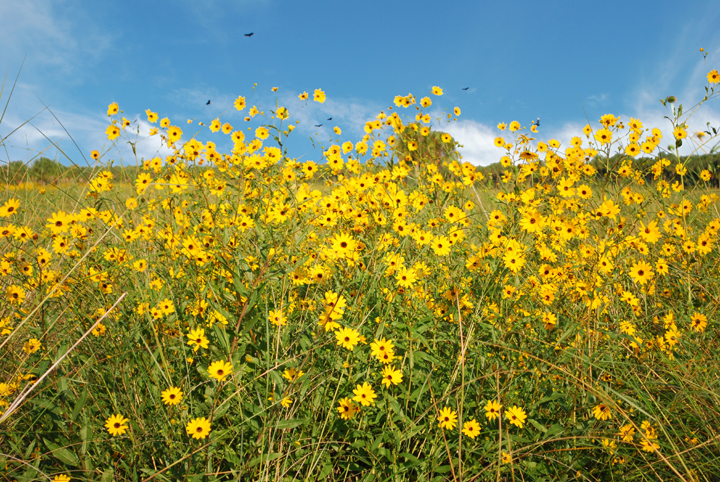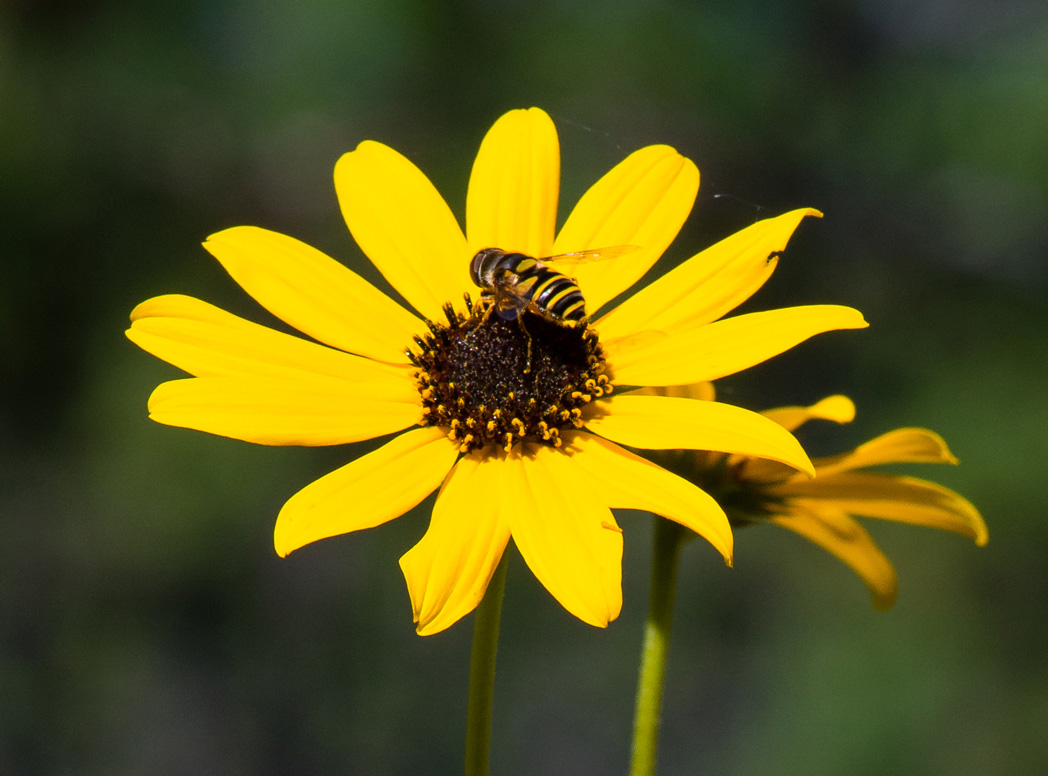Narrowleaf sunflower
Pictured above: Narrowleaf sunflower (Helianthus angustifolius) by Keith Bradley. Click on terms for botanical definitions. View post as a PDF.
Also known as Swamp sunflower, Narrowleaf sunflower (Helianthus angustifolius) is one of Florida’s most common sunflowers. It occurs naturally in marshes, wet flatwoods and roadside ditches throughout North and Central Florida. It is a short-lived perennial, and blooms primarily in October and November, although some flowering can occur in September and December. In nature, it tends to form dense colonies, resulting in spectacular swaths of sunshine yellow. Narrowleaf sunflower blooms attract bees and butterflies, while its seeds provide a tasty treat for birds.
Narrowleaf sunflower’s showy golden blooms are relatively large (about 3 inches in diameter), with bright yellow, strap-shaped ray florets surrounding a compact head of reddish-brown disk florets. Flowerheads are cupped in green, hairy bracts. Leaves are long, linear to acicular, and have a rough, sandpaper-like surface. Leaf margins are entire or may be revolute. Leaf arrangement is alternate toward the top of the stem and opposite below. Stems are rough and branched.

Family: Asteraceae (Aster, composite or daisy family)
Native range: Panhandle, North and Central Florida south to Lake Okeechobee
To see where natural populations of Narrowleaf sunflower have been vouchered, visit florida.plantatlas.usf.edu.
Hardiness: 8A–10A
Lifespan: Perennial
Soil: Moist to wet, acidic soils
Exposure: Full sun to minimal shade
Growth habit: 4–6’ tall
Propagation: Seed, division
Garden tips: Narrowleaf sunflower is most suitable for large, open wet sites such as a buffer along wetlands, or planted in a sunny moist meadow; along a lake edge, retention pond or ditch; or in the back of a bog garden. Because of its height and its propensity to form large clusters, it is not recommended for small gardens or formal landscapes. It can spread aggressively by its roots and may outcompete other wildflowers in a small setting. Consider using it where you won’t mind seeing spent stems and flowers after a bloom. Stems can be pinched back in late spring or early summer to encourage shorter, bushier growth and more blooms. Divide plants for using elsewhere. Plants may die back in winter, particularly in North Florida.
Caution: Narrowleaf sunflower naturally ranges as far west as Texas and as far north as New York. Large retail outlets and national seed suppliers sell varieties originating from out of state. Their performance in your landscape can be different than Florida ecotypes.
Narrowleaf sunflower seeds are available through the Florida Wildflowers Growers Cooperative. Plants are often available at nurseries that specialize in native plants. Visit PlantRealFlorida.org to find a native nursery on your area.
For more information on other Helianthus species, see these resources:

